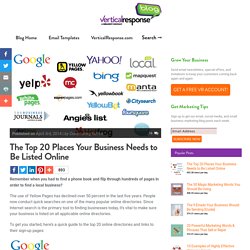

The Surprisingly Best Times to Send Your Email Marketing Campaigns. Long-standing advice amongst email marketers when asked, “When is the best time to send email?”

Has always been, “Tuesday through Thursday morning, between 8 and 10am.” Sure, it’s common knowledge throughout the industry that people tend to open their email in the mornings, but “the times, they are a-changin’,” as Bob Dylan would say. Let’s visit some current email marketing trends that are creating shifts in open rates, and how they’ll impact your next email send. AdWeek Infographic based on Experian study A 2012 Experian email marketing benchmark study across all industries found that recipients are surprisingly active late at night. As for which day of the week performed best, emails sent on Mondays had the highest ROI, but emails sent on Friday had a higher click through rate. Based on these findings, you might want to experiment with sending your emails at unconventional times – such as 11pm or 6pm and on the weekend– to see if it yields better results. Weekend Warriors Mobile Matters.
10 Examples of Highly Effective Welcome Emails. One of the most important tools in your email marketing toolbox is an automated welcome email.

When new contacts subscribe to your list you want to welcome them to the group with an inviting email. A welcome email is the first friendly exchange between your business and a new subscriber. It sets the tone for future communications and encourages new members to engage with your business. To help you create an effective welcome email, we’ll highlight ten effective examples. These emails come from businesses big and small. 1. “One of the key pieces of a welcome email is a warm introduction,” says Tiffany Romero, president of Sway Group, a content marketing agency. The David’s Bridal email above features a great introductory message. 2. In the example below, the National Football League (NFL) lists five advantages of being a member of its email list. 20 Powerful Marketing Words and Phrases That Sell or Repel. Words have power; we all know that.

But do you know which marketing words encourage subscribers to act, customers to buy, or donors to give? We read through dozens upon dozens of emails and compiled a list of “sales-boosting” marketing words and a list of “sales-deflating” terms. Keep these lists handy the next time you craft an email or social post. Boost sales with these powerful marketing words: 1. 2. The 9 Emails Your Business Should Be Sending.
So, you’ve already taken that first critical step toward getting your email marketing program off the ground by building your contact list, and now you need to send your subscribers…something.

But what should that something be? If you’re struggling to figure out what to send or how to keep your customers engaged, rest easy — we’ve highlighted nine emails your business should send on a regular basis, along with a few tips on creating them. We’ll also tell you, on a scale of 1 to 5, the difficulty level for each email. The closer the number is to 5, the more effort it takes. 1. Purpose: To promote a product or service, usually to entice customers to make a purchase.Business that would benefit: Every business.Difficulty level: 1 — Promotional emails are short and sweet. Three tips for creating a promotional email: Make the offer clear. Create a sense of urgency. 2. The 30 Magic Marketing Words You Should Be Using. Savvy business owners, copywriters, and designers know how language influences emotions and persuades action.

Certain words and phrases are time-tested to boost response and conversion rates almost across the board. Of course, different motivating words and phrases work better in different situations, and it’s up to you to figure out which work best for your business. It isn’t all that difficult to figure out, though: If your intuition doesn’t tell you, your customers will. Test the following 30 “magic marketing words” in your next email, social media or blog post, on a direct-mail postcard or website to see which yields the best response. You – Write as though you’re speaking to the customer and about the customer, not about yourself.Because – Give customers a reason why they need to take action.Free – “Because” we all like free things, right? The Top 20 Places Your Business Needs to Be Listed Online. Guides Published on April 3rd, 2014 | by Contributing Author Remember when you had to find a phone book and flip through hundreds of pages in order to find a local business?

The use of Yellow Pages has declined over 50 percent in the last five years. People now conduct quick searches on one of the many popular online directories. Since Internet search is the primary tool to finding businesses today, it’s vital to make sure your business is listed on all applicable online directories. To get you started, here’s a quick guide to the top 20 online directories and links to their sign-up pages:
The Top 20 Places Your Business Needs to Be Listed Online.